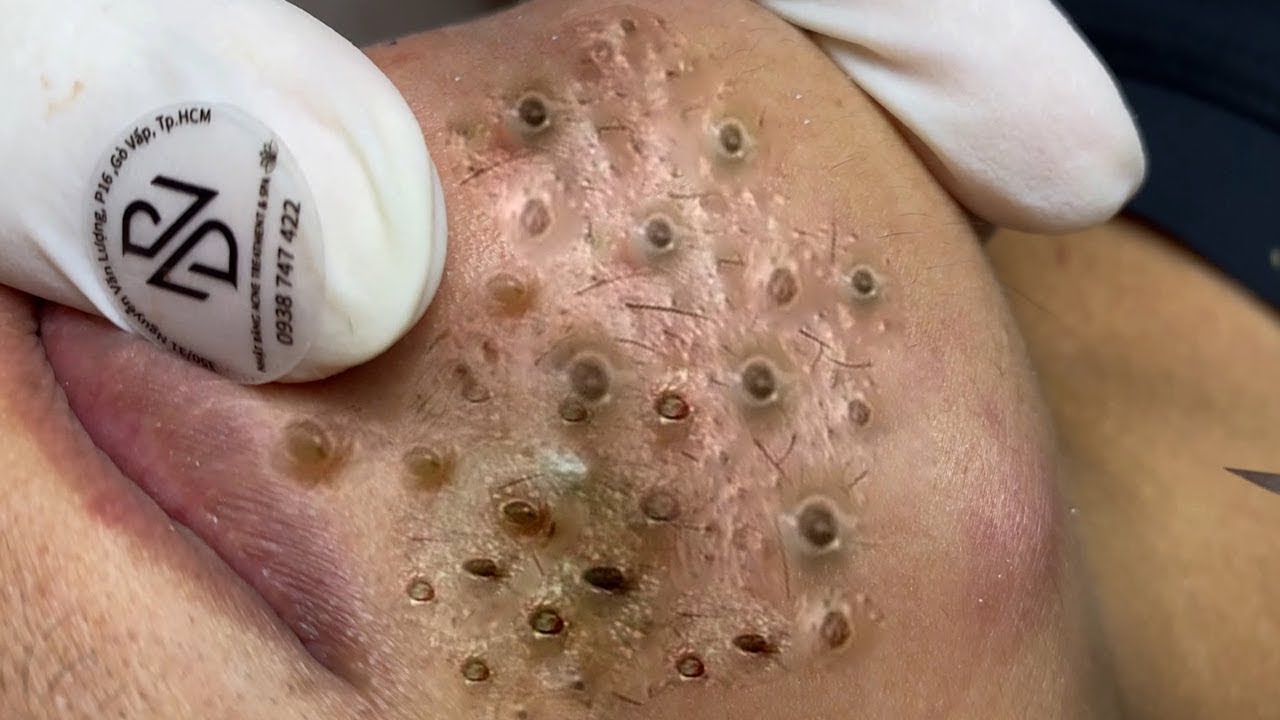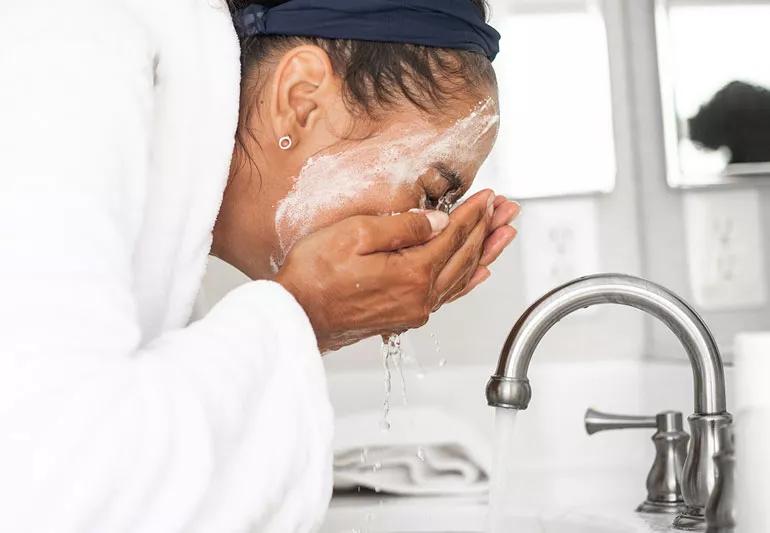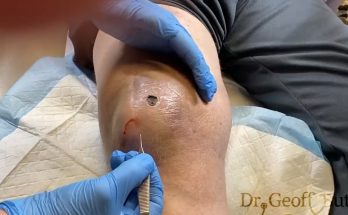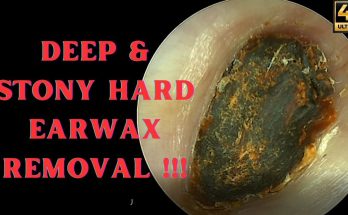How To Get Rid of (and Prevent) Blackheads: 10 Solutions
Try exfoliating and using salicylic acid to treat this pesky skin care issue
Is there anything more annoying than seeing little black specks on your face?
We’ve all stood in front of the mirror and examined our pores from time to time, cursing our skin. But if the appearance of blackheads on your face really does bother you — rest assured, there are ways to get rid of them.
Dermatologist Alok Vij, MD, discusses how to get rid of blackheads and offers tips to prevent new ones from forming.
How to get rid of blackheads at home
“There are a few different ways we can attack blackheads,” says Dr. Vij. “But I do stress to be patient with your skin and that consistency is key. It took a while for your skin to get to this place and it will take a little while to get it back to where it was before.”
Learn how to remove blackheads with these tips:
Opt for salicylic acid
“My go-to treatment for blackheads is recommending a salicylic acid wash once a day,” he says. “There are even medicated face wipes that contain it.”
If you want to try salicylic acid, start off by using a product that contains between 2% and 4%. Then, you can modify the amount used by how your skin reacts. If it’s drying you out, opt to go down a bit.

Use an alpha or beta hydroxy acid cleanser
Alpha or beta hydroxy acid, also known as AHAs and BHAs, are a group of compounds known for its skin care benefits. Some of the most popular elements in this group include salicylic acid, lactic acid and citric acid.
Another great option for removing blackheads in the AHA family is using a product containing glycolic acid. Aim to use a cleanser with 10%. Glycolic acid serves as a great exfoliator, helping to remove the outer layer of dead skin cells — and those annoying blackheads.
Try a retinoid
“From a medical standpoint, I’ll typically prescribe a topical retinoid as treatment,” says Dr. Vij. “It’s good for making sure that the dead skin cells aren’t collecting inside the pores. It also helps to prevent outbreaks and reduces the formation of acne scars.”
Sometimes, it works to split treatment between a retinoid and an alpha or beta hydroxy acid. An example treatment could be using a salicylic acid cleanser in the morning and a retinoid at night.
Make sure you exfoliate
Exfoliation is an important part of every skin care routine — but it’s very easy to overdo.
“You should really only be exfoliating a couple times a week,” explains Dr. Vij. “Over-exfoliating your skin, especially your face, will dry it out very quickly.”
What’s worse? When your skin is dried out it produces more oil, which contributes to more blackheads. Your best bet is to keep exfoliating to a minimum.
Consider in-office treatments for stubborn blackheads
So, how do you get rid of stubborn blackheads? You may need the assistance of your dermatologist, who may recommend these in-office methods.
Chemical peels
Your dermatologist might suggest a chemical peel. This technique uses a chemical solution to remove your skin’s damaged outer layers. This can result in improved skin texture and smoothness.
But be aware — not all insurances cover these types of treatment.
And depending on whether you have a light, medium or deep chemical peel you may experience redness, stinging and swelling of your skin in the first 48 hours.
Microdermabrasion
Another treatment is microdermabrasion, which is also known as a “power peel.” Your skin is sprayed with tiny crystals to gently sand away your outer layer of skin.
The minimally invasive procedure improves the appearance of your skin. You may have mild side effects like redness, swelling and tenderness for a few hours after your treatment.
And like chemical peels, you may have to pay out-of-pocket for microdermabrasion.
Extraction
Sometimes, a good course of action for stubborn blackheads is by manual extraction, but it should always be kept in the hands of a professional.
Otherwise, you risk scarring your skin.
A professional — whether it’s a dermatologist or esthetician — may prep your skin with a light steam to expand your pores. Then, using a sterile metal tool called a comedone extractor, they’ll apply pressure to the blackhead to remove it from your pore.
Some professionals opt to use their fingers, which are typically covered in cotton, to perform the extraction.
Preventing blackheads
Your best defense against blackheads? Prevention. Here are some things you can do to help prevent or limit how many blackheads you get:
Don’t pick at your skin
While this is easier said than done, it’s vital.
Bacteria and oil are all over your hands, and anytime you touch or pick at your skin, you’re transferring it to your face. It can lead to increased inflammation and additional skin problems, including hyperpigmentation.
Picking at your skin can also cause permanent scarring. We know it’s hard, but try to resist.
Choose the right makeup and skin care products
If you’re serious about putting an end to pesky blackheads, be mindful about the products you put on your face.
Noncomedogenic makeup and skin products are specifically designed to not clog your pores. Using these types of products can help cut down on the number of blackheads you have. Dr. Vij also stresses the importance of using a facial moisturizer with an SPF of at least 30.
And try to avoid wearing oily and heavy products. A good rule of thumb is the thinner the product, the better. Anytime something is on your skin — even a moisturizer — it has the potential to clog your pores.
Tread lightly with pore strips and face masks
If you’ve been wondering how to get rid of blackheads on your nose, you may have turned to pore strips or skin care face masks.
Adhesive strips and skin care masks tend to have the immediate gratification that most people are looking for, but oftentimes, these products don’t solve the underlying skin issue at hand.
“Pore stripes use an adhesive to lift the congestion out of the pore, which can be helpful if you’re getting ready for an event. For example, a teenager who wants to get ready for prom,” notes Dr. Vij. “But it will really only temporarily clear your skin and can have some side effects such as excess irritation and dryness.”
So, while it’s good advice to tread lightly with pore strips and skin care masks, they can serve a purpose from time to time. If you’re a savvy skin care user, ask your dermatologist about what products they recommend. This way, you can minimize the risk of using a mask or strip that could potentially irritate your skin.
While blackheads can be annoying and even embarrassing there are ways to combat the skin care issue — and it’s key to find a solution that works best for you and your skin type.
“Every skin type is different and should be treated that way,” states Dr. Vij. “And part of my job is to help you figure out what combination of treatment works for your skin.”



